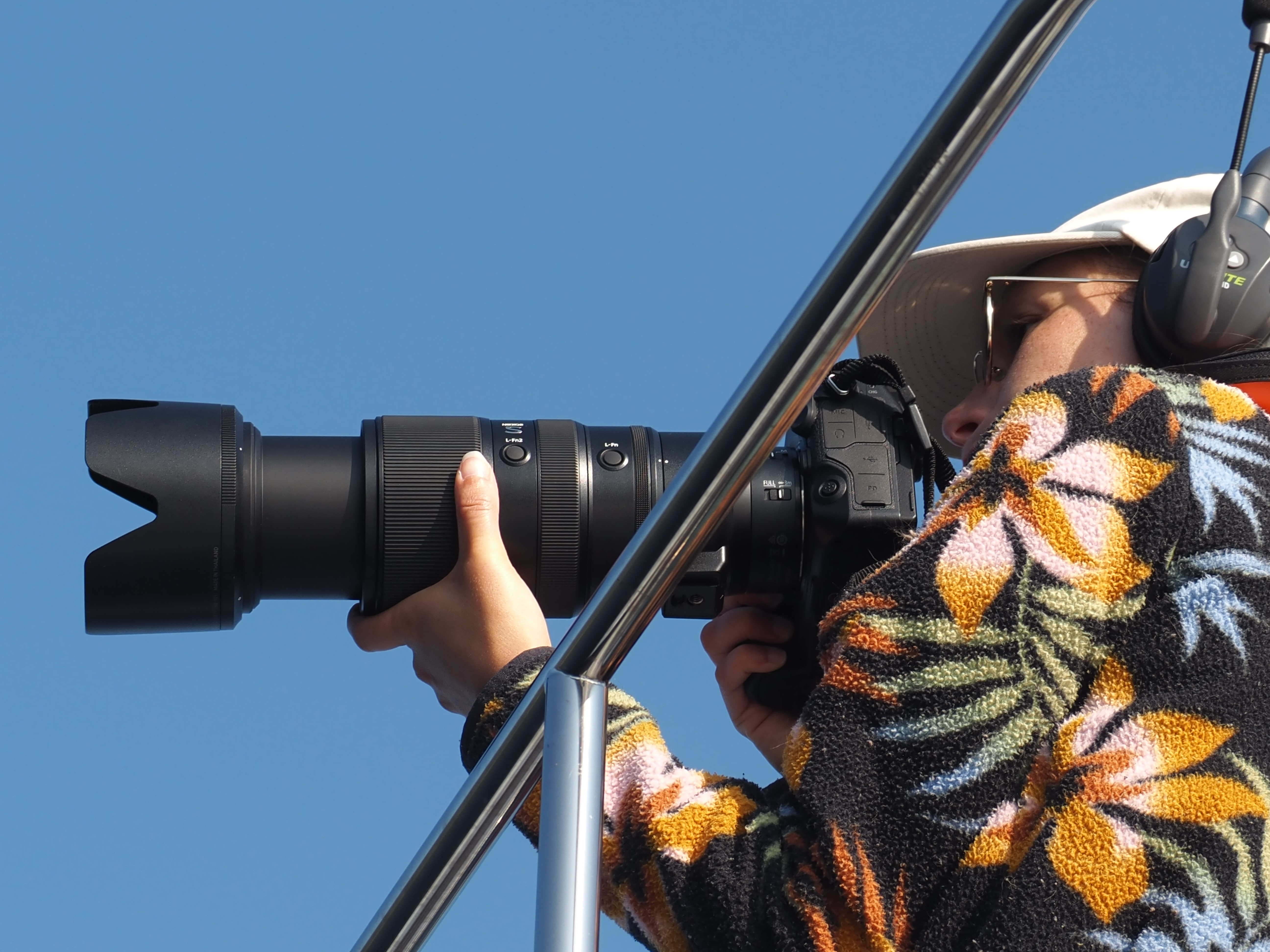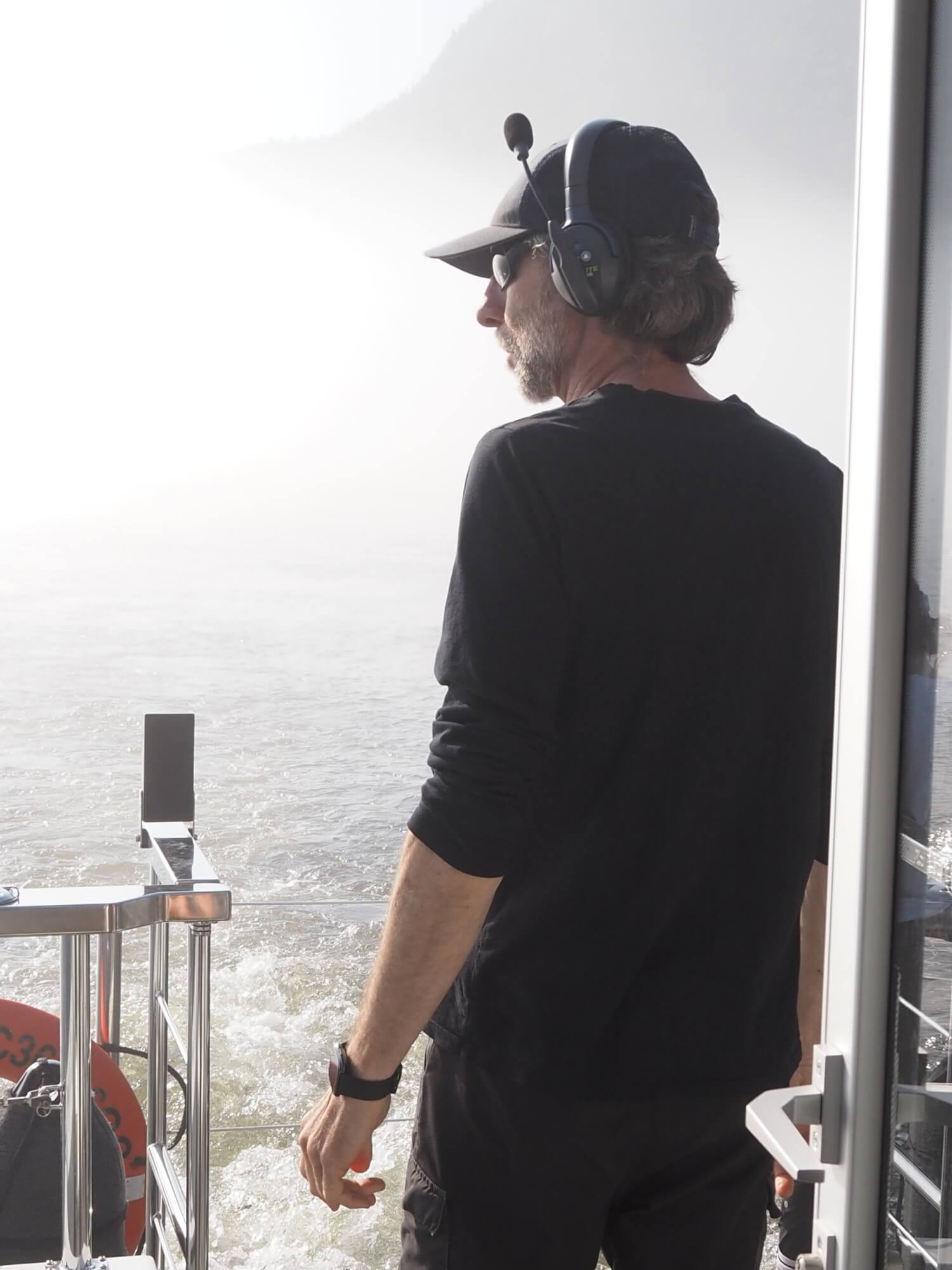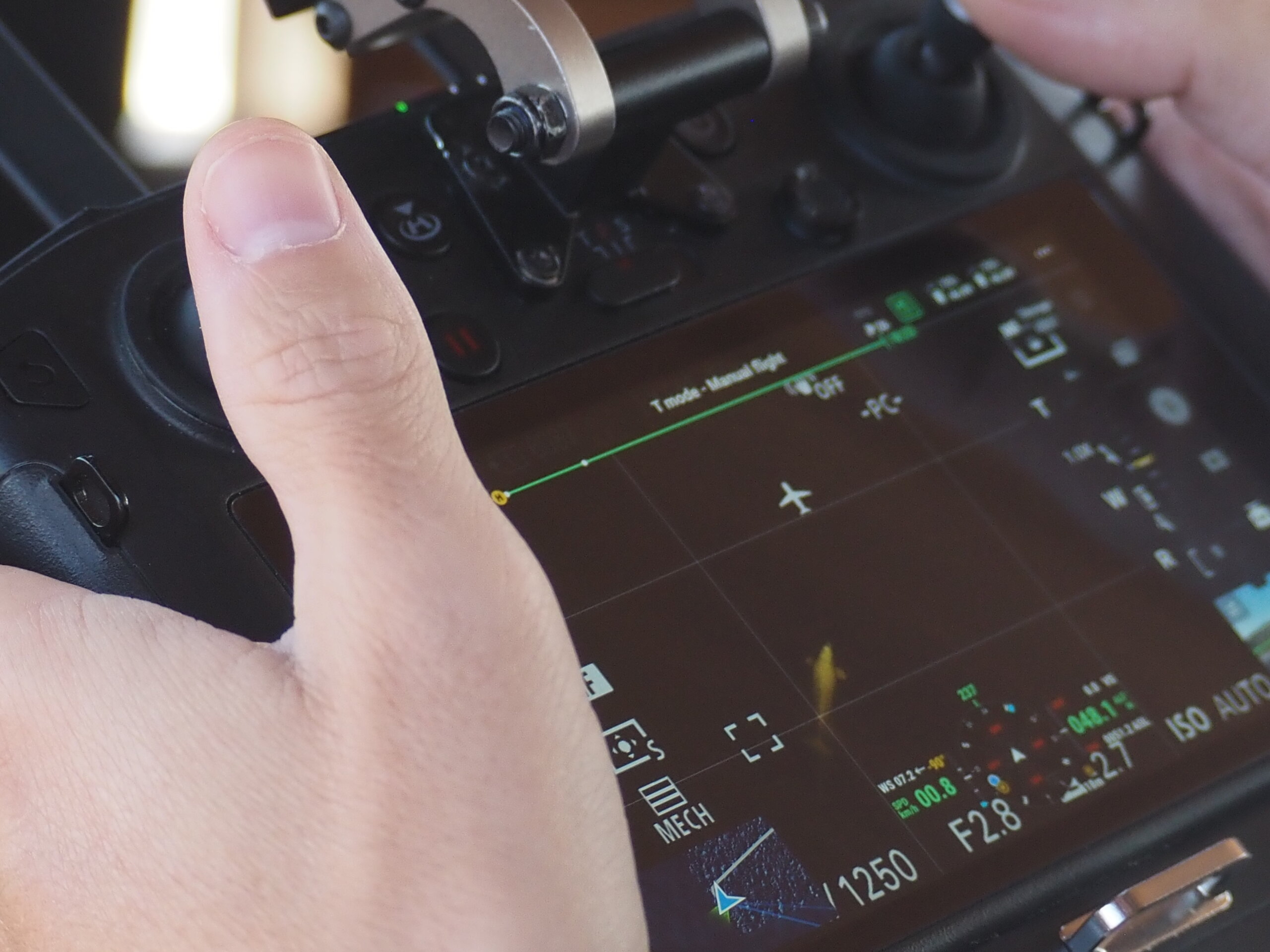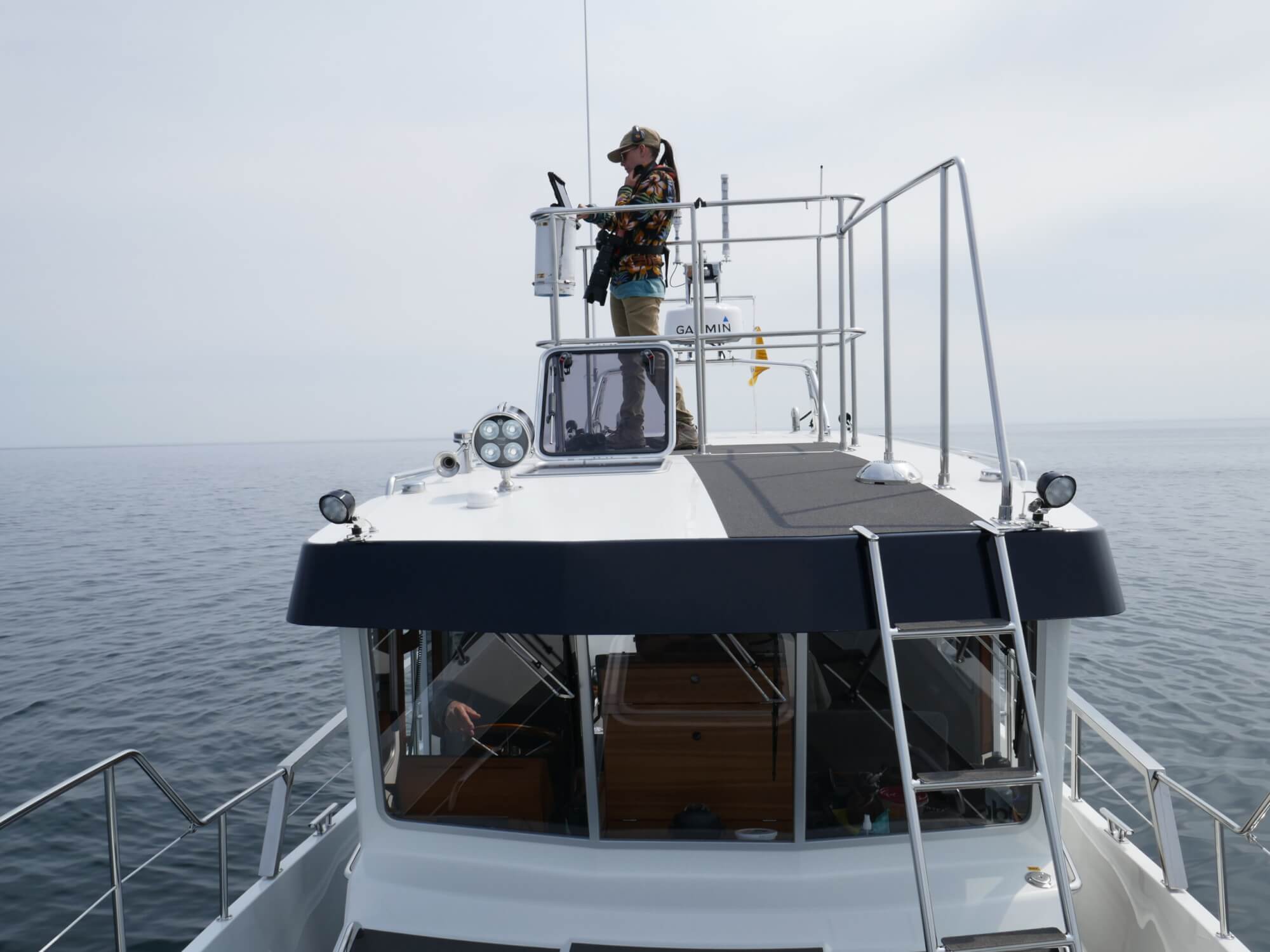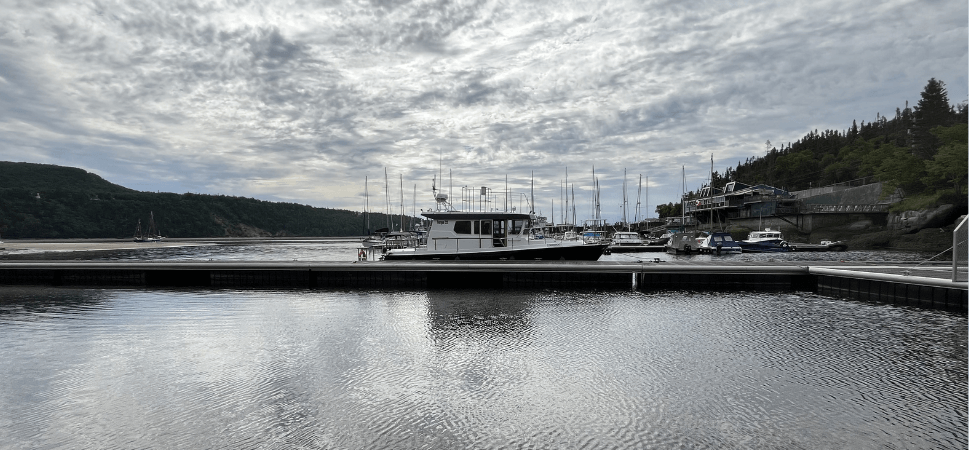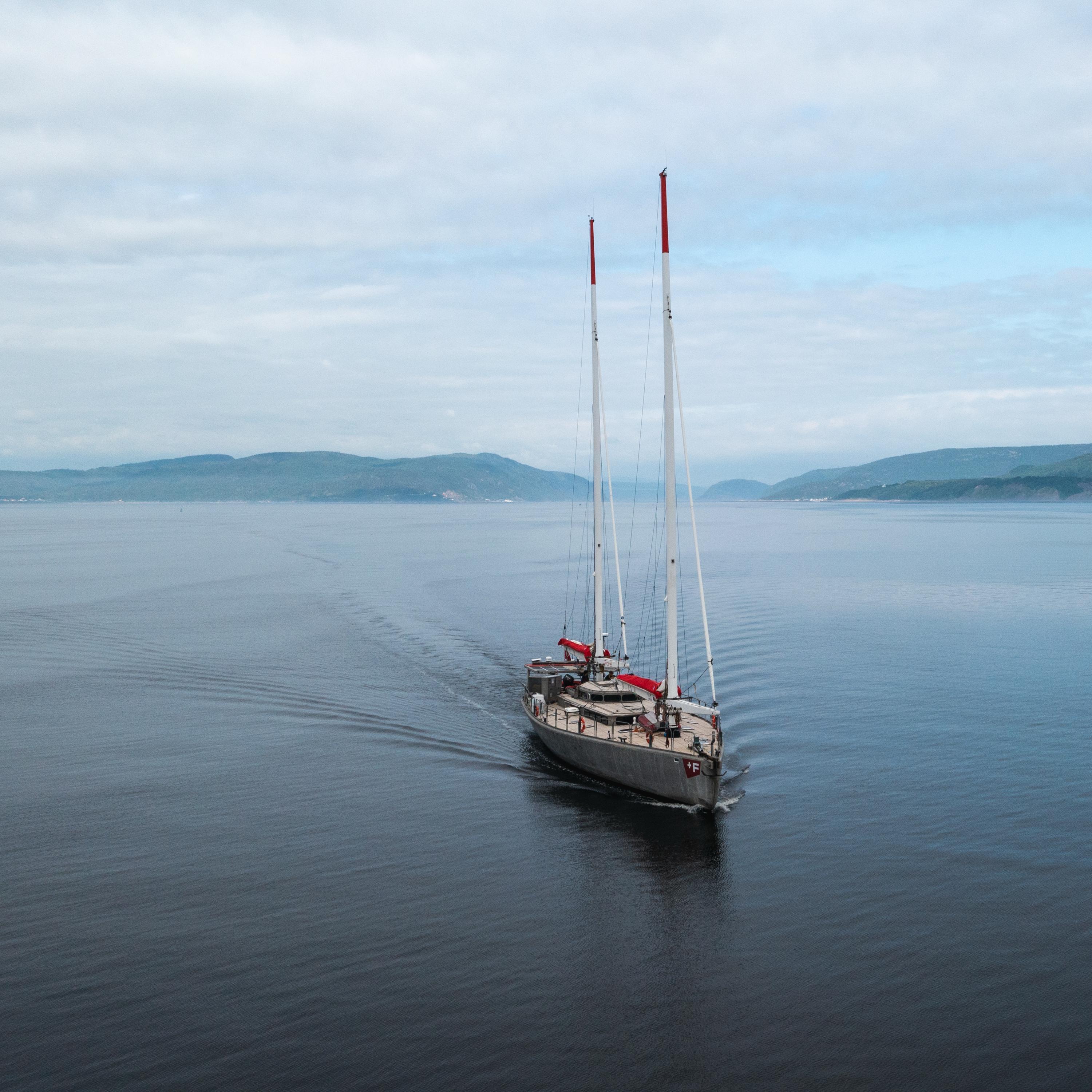At the Tadoussac marina, the Group for Research and Education on Marine Mammals (GREMM) research team boards the boat at 7:00 a.m. sharp. The four-person crew consists of Michel, the captain; Mathieu, the drone pilot; Estelle, the research assistant; and Jade-Audrey, who oversees data collection and photo-ID. Poor conditions in the estuary force the crew to head up the Saguenay Fjord, where the fog has already partially rolled in.
Ebbing tide, rising fog
Our first encounter comes quickly. A few belugas, heading up the fjord, dot the misty waters. They sometimes dive for several minutes at a time. Standing on a platform on the roof of the boat, Jade-Audrey notes what she observes and begins snapping photos.
In parallel, the research assistant enters some of the data directly into the digital tablet app. To save time, the details of the composition of the observed groups are dictated aloud and simultaneously transcribed into the tablet. She must also photograph the animals’ left and right flanks.
Data collection is carried out within a 2 km radius, as it is assumed that these belugas belong to a single herd. Jade-Audrey adds: “For belugas outside the 2 km zone, I note their presence according to the direction they are facing.”
Photo-ID challenges
With her Nikon Z8 and 100-400 mm lens, the research assistant aims her camera at every beluga she can see within a 100-metre radius. Her main challenge is trying to photograph all of the belugas around the boat.
Belugas are challenging to photograph due to their pale colouring, which varies from one individual to the next. Jade-Audrey therefore had to constantly adjust the camera’s exposure to avoid overexposing individuals in the changing light.
Fog was also a factor that needed to be accounted for, as it made it harder for the camera to focus. Additionally, the glare made some patches of water unsuitable for our work, as the sun’s reflection on the surface made it difficult to clearly discern the belugas.
However, belugas are often difficult to identify when they don’t show any distinctive markings. We were very careful not to photograph the same individuals twice, but belugas are highly mobile and it’s easy to confuse them. The crew would sometimes give different individuals temporary nicknames to tell them apart and track their movements.
Les bélugas dans l'œil de l'objectif
The assistant had to remain standing, motionless, with all her gear: personal flotation device (PFD), coat, binoculars, camera (which is very heavy), headset and microphone, and of course, a tablet for recording the data. And remember, a single contact can sometimes last two hours!
Teamwork
Jade-Audrey is in constant communication with the captain to tell him which individuals she has photographed and points which way to go. She also helps guide the drone toward individuals that have not yet been photographed, as she enjoys a 360-degree view from her turret.
Unlike in the estuary, belugas in the fjord are more geographically restricted and are less likely to wander off at random. In this case, the herd encountered was rather “easy to work with,” she says, because the individuals were swimming in a predictable manner.
Once the contact was completed, the boat headed for Cap à la Boule and Anse-de-Roche, but was unable to locate any more belugas. With the wind slowly picking up, Antares finally turned around and returned to the docks at around 10:30. A short contact and a short day, but still loads of data to process!


